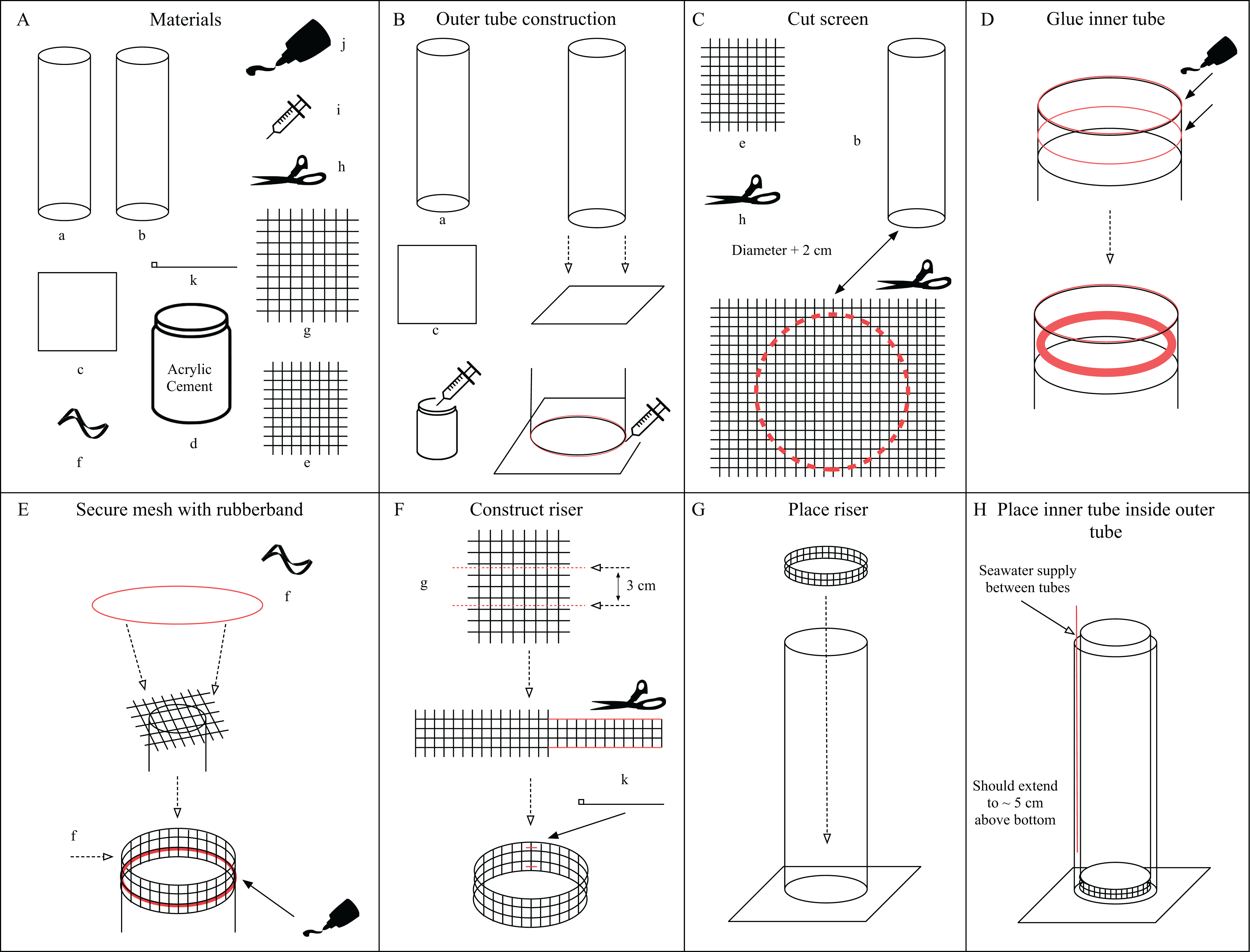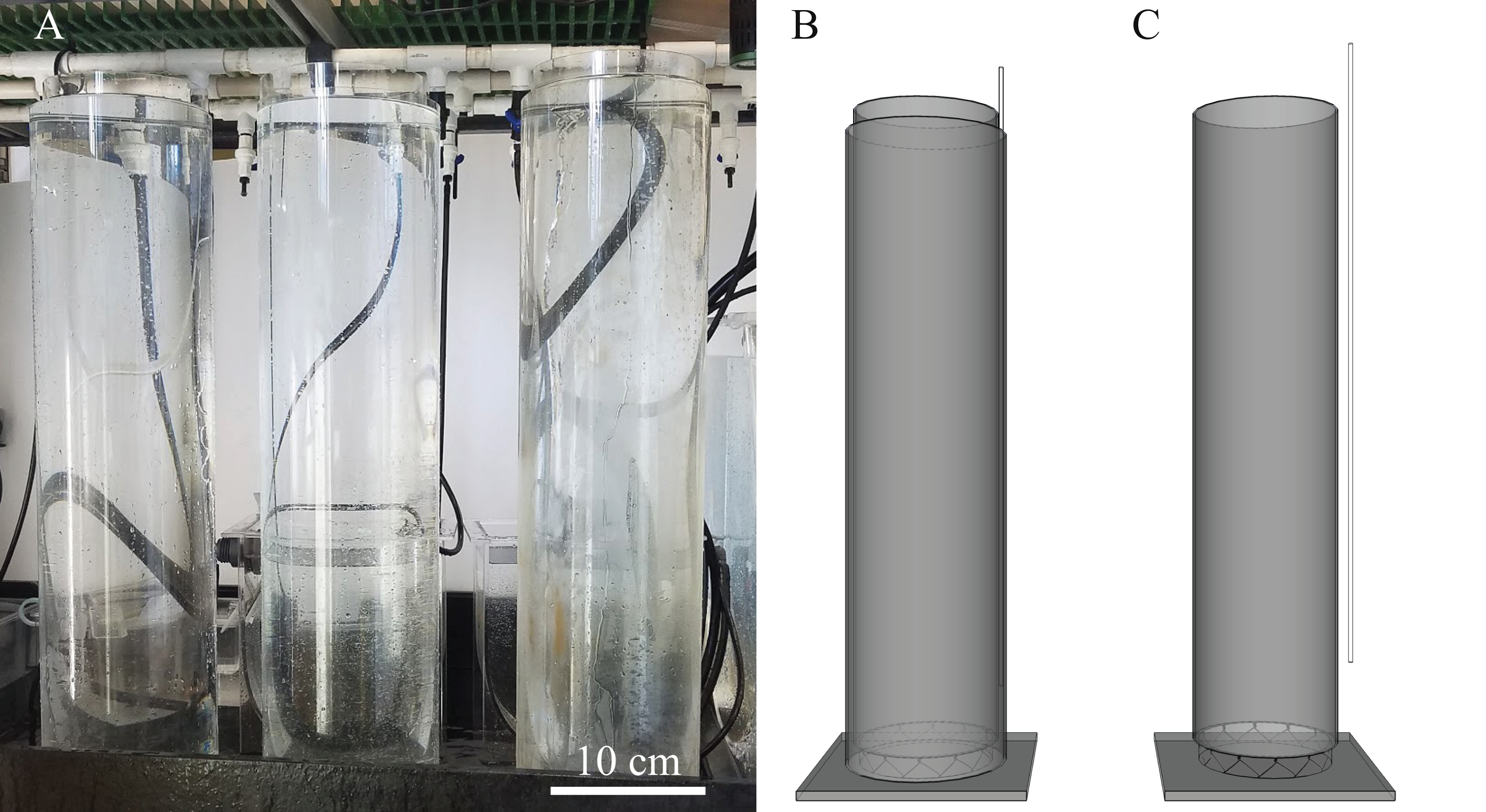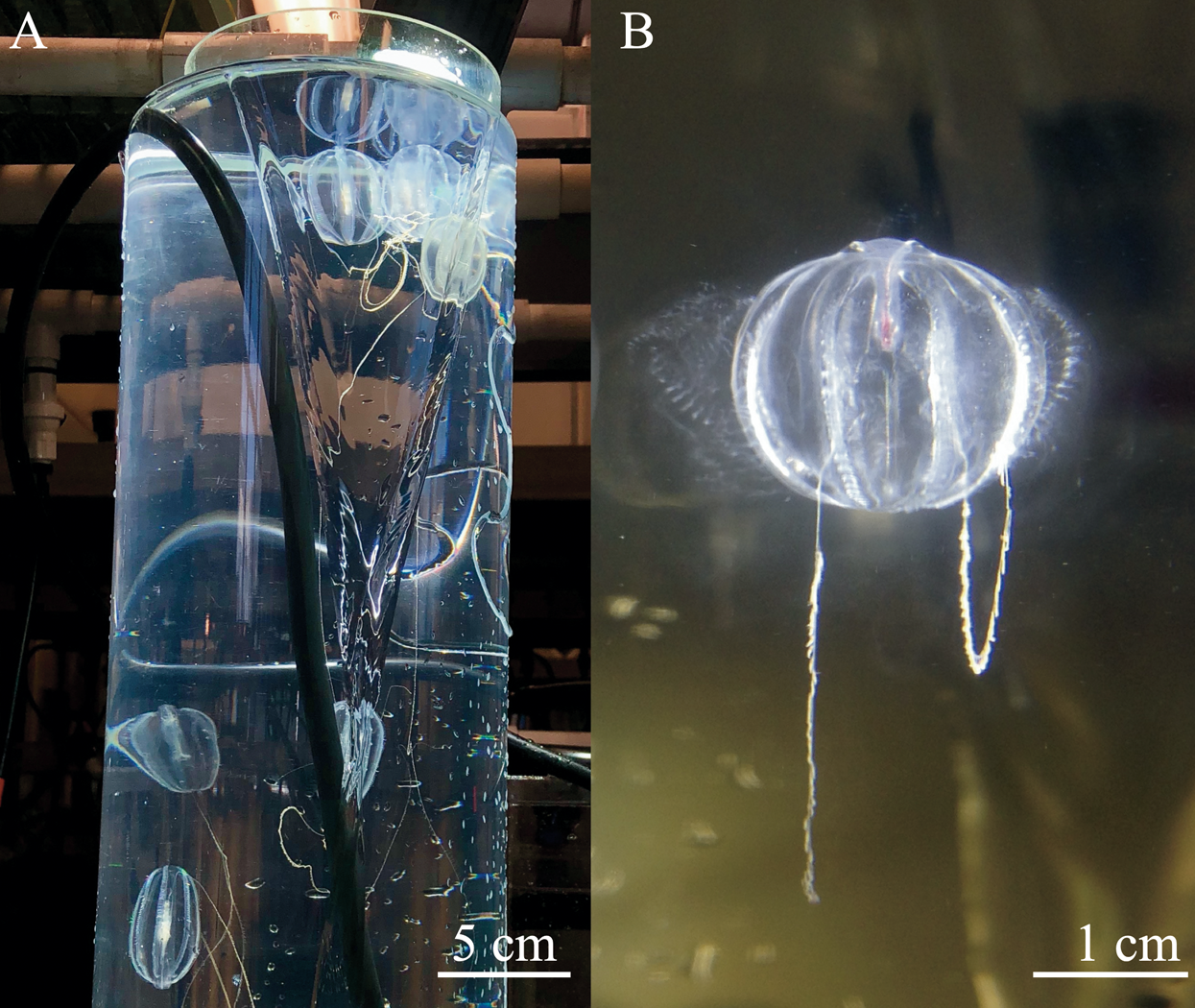Aquarists at the Monterey Bay Aquarium utilize an ingenious yet seemingly simple device to culture a variety of “gelata”, the collective name for the pelagic gelatinous animals that drift in the plankton. Some of the better-known gelata are jellies and comb jellies (ctenophores), but gelata also include hydrozoans, siphonophores, and larvaceans (which are the pelagic cousins to the benthic tunicates we coral aquarists are more familiar with).
The brilliant aquarist team of Wyatt Patry, MacKenzie Bubel, Cypress Hansen, and Tommy Knowles at MBA created and studied diffusion tubes for the sole purpose of coddling the incredibly delicate larval phase of the most delicate gelata. While most larval fish and crustaceans can tolerate the bumps and rough edges of a MoLaRs system, black round tub, or Kreisel tank, the most delicate soft-bodied gelata cannot. The diffusion tube allowed the team to culture 8+ species of gelata that hadn’t been repeated anywhere else at the time their paper was published: https://peerj.com/articles/8938/
The concept is fairly simple and could be built at home with basic tools. An acrylic cylinder nests just inside of a slightly larger and shorter acrylic cylinder. The larvae of concern live inside the inner cylinder. The outside cylinder plays a dual role as a thermal jacket keeping the inner cylinder at the correct temperature and also providing a continuously circulating reservoir of clean water that exchanges with the inner cylinder, through a fine screen at the bottom of the inner cylinder, via diffusion.

A bit of tubing is inserted between the two cylinders and a significant amount of water is continuously pumped through to keep the outside water volume sufficiently flushed. That fine screen that separates the two water volumes is elevated a couple of inches off the bottom to allow good circulation beneath it. The key here is that no water is being pumped into the inner cylinder, so there is hardly any water velocity or suction to damage small animals inside, but the water inside stays clean and highly oxygenated because of the low bioload and constant diffusion across the screen. In addition, the generous height of these cylinders allows an animal plenty of space to move up and down in the water column throughout the day. Full DIY plans on how to build these tubes can be found at the link.

Baby cucumbers
At MBA the diffusion tubes were further utilized by another aquarist, Ellen Umeda, to culture temperate sea cucumber and sea star larvae. Could the diffusion tube be useful for some yet-to-be-cultured coral reef fish or invertebrate that has so far eluded aquarists? My hope is that more aquarists will tinker with this brilliant concept and expand its use to more novel species in the years to come.



